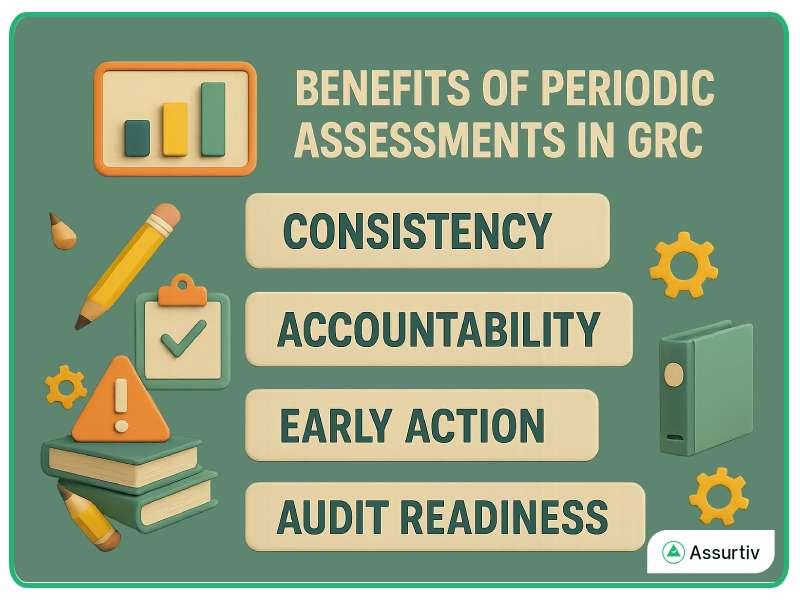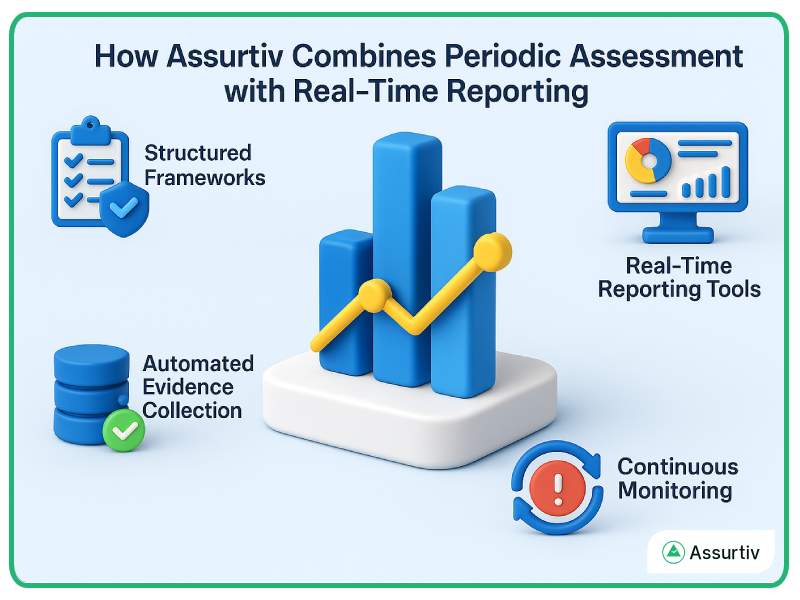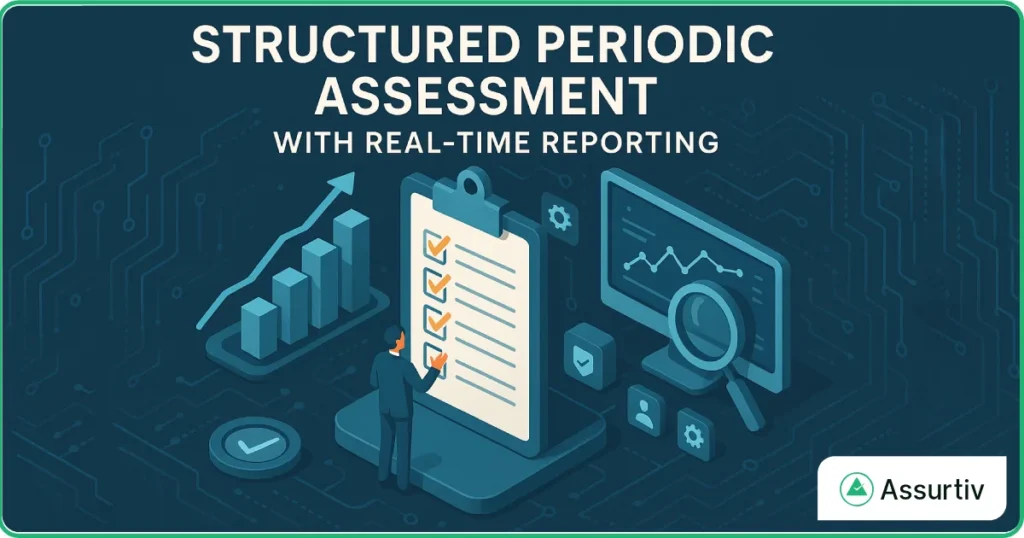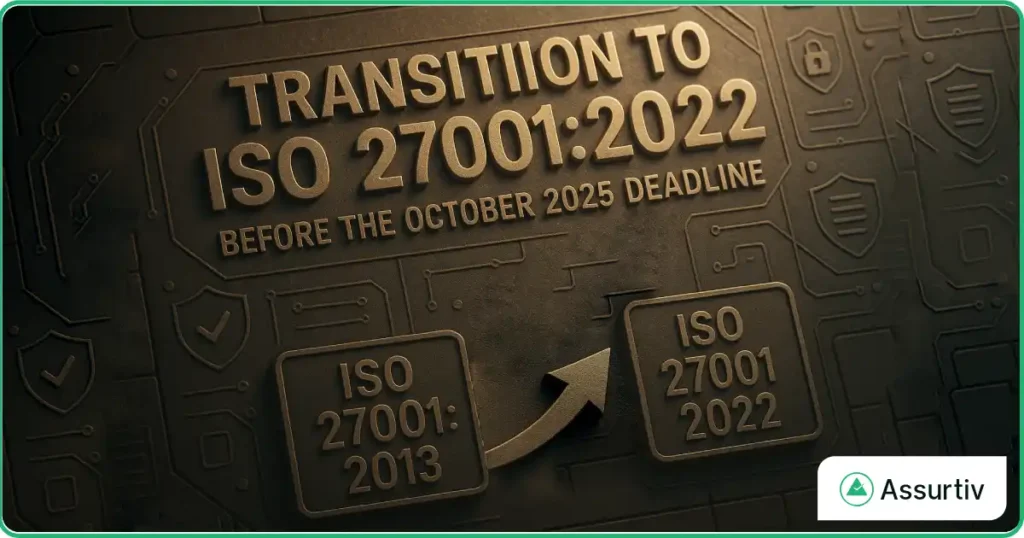Structured Periodic Assessment with Real-Time Reporting
10 Oct 2025
When it comes to governance, risk, and compliance, one-time checks are no longer enough. Risks evolve daily, and compliance expectations are continuous. That’s why organizations are shifting from annual reviews to periodic assessment supported by real-time reporting.
But what does this really mean? In simple terms, periodic assessments are structured evaluations carried out at regular intervals to monitor progress, identify risks, and ensure controls are working effectively. Combined with real-time reporting, they provide organizations with live insights instead of outdated snapshots. Platforms like Assurtiv GRC bring these two together, helping businesses move from reactive compliance to proactive governance.
What Is Periodic Assessment?
A periodic assessment is a systematic evaluation conducted on a scheduled basis- monthly, quarterly, or annually, depending on the context. For example, in education, it can mean small tests during the year to measure student progress. In business, it often refers to structured reviews of risks, compliance, and operational performance.
Many people ask: What is periodic assessment in education? In schools, it refers to assessments carried out at intervals, rather than just final exams. Similarly, in GRC, periodic assessments provide continuous visibility into risks rather than waiting for year-end audits.
In short, periodic assessments are about consistency, accountability, and early detection.
Why Traditional Reporting Falls Short
Most organizations still rely on Excel files or PowerPoint decks that are already outdated by the time they reach decision-makers. This delay creates two problems:
- Emerging risks go unnoticed until the next reporting cycle.
- Leaders make decisions based on stale data.
This is where real-time reporting comes in. By linking assessments with live dashboards, stakeholders get immediate insights into compliance status, risk trends, and progress against objectives.
Benefits of Periodic Assessments in GRC

- Consistency: Every risk and control is measured against the same criteria at regular intervals.
- Accountability: Responsibilities are clearly assigned to control owners and risk managers.
- Early Action: Issues are identified before they grow into critical problems.
- Audit Readiness: Evidence is continuously updated, reducing last-minute stress.
These benefits mirror what students experience with periodical assessment tests, continuous feedback that drives improvement instead of one high-stakes exam.
How Assurtiv Combines Periodic Assessment with Real-Time Reporting

Assurtiv GRC transforms periodic assessments from static events into dynamic processes.
- Structured Frameworks: Periodic assessments are aligned with ISO 27001, SOC 2, GDPR, and more. Pre-mapped controls standardize evaluation across clients.
- Automated Evidence Collection: Instead of chasing employees, Assurtiv automatically gathers and validates evidence. This ensures assessments are based on accurate and current data.
- Real-Time Reporting Tools: Risk scores, compliance dashboards, and remediation updates are available instantly. No more waiting weeks for compiled reports—leaders see progress live.
- Continuous Monitoring: Beyond scheduled assessments, the platform flags overdue actions, missing evidence, or new risks in real time.
This combination provides a real-time reporting tool that ensures assessments are not only regular but also meaningful.
Periodic Assessments in Action with Example
A SaaS provider previously used spreadsheets to track compliance. Reporting took three months, leaving executives with outdated information.
After adopting Assurtiv, they shifted to quarterly periodic assessments supported by real-time dashboards. Now, the CISO presents live compliance data in board meetings, reducing reporting time by 70% and improving trust with both executives and auditors.
This mirrors how teachers use periodic assessments in education, frequent feedback loops that improve performance throughout the year.
Why This Matters for Organizations
By combining periodic assessments with real time reports, organizations gain:
- Transparent, continuous insight into compliance.
- Faster remediation when issues are spotted.
- Reduced audit pressure with evidence always ready.
- Stronger confidence from boards, regulators, and clients.
In education, periodic assessments improve learning outcomes. In business, they improve governance and resilience.
Final Thoughts
Annual reviews and delayed reports belong to the past. Modern organizations need periodic assessments backed by real-time reporting to stay ahead of risks and compliance requirements.
With Assurtiv, this isn’t just theory, it’s practical. Automated evidence, structured assessments, and live dashboards make compliance continuous and transparent.
Ready to move from static assessments to continuous improvement? Request a demo with Assurtiv and see how periodic assessments and real-time reporting can transform your GRC.




